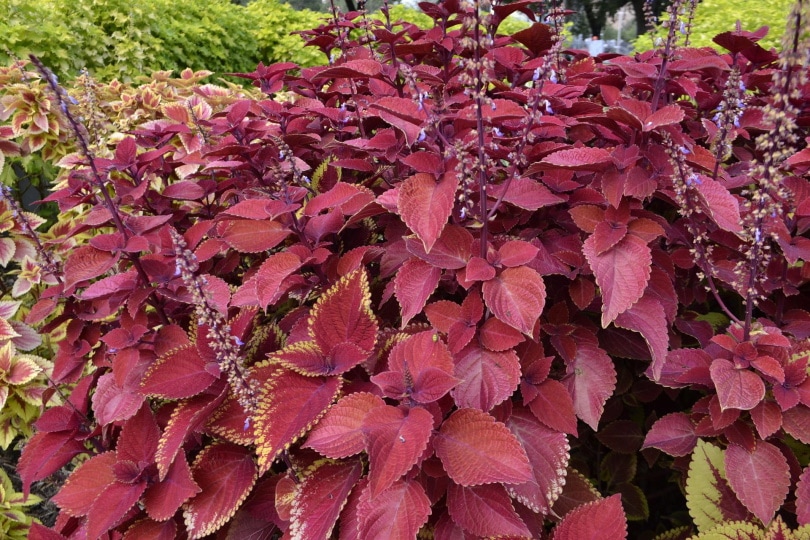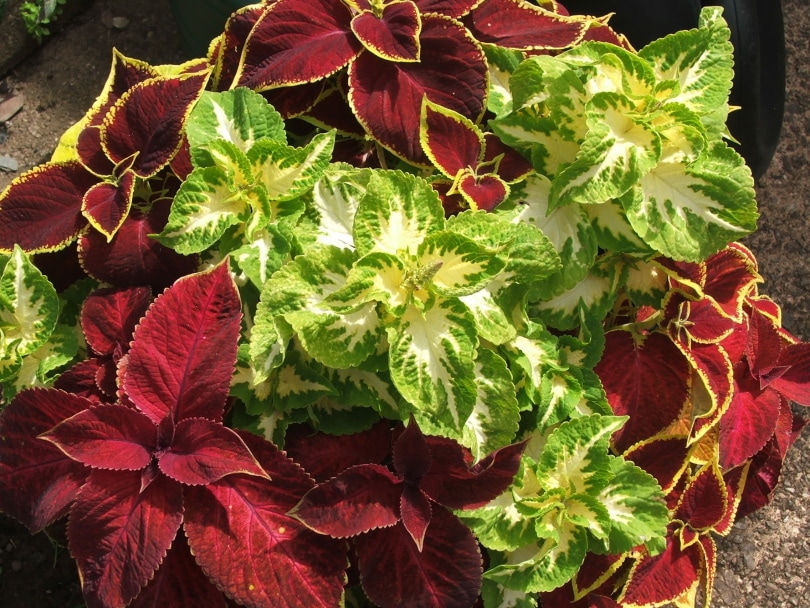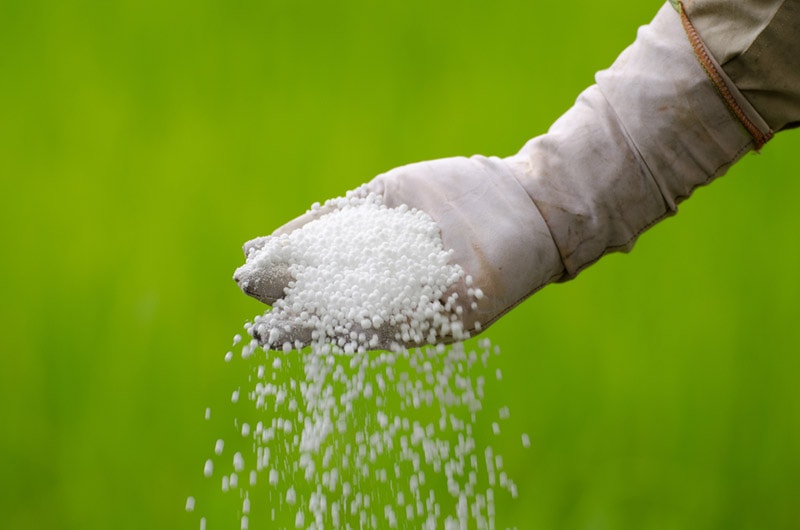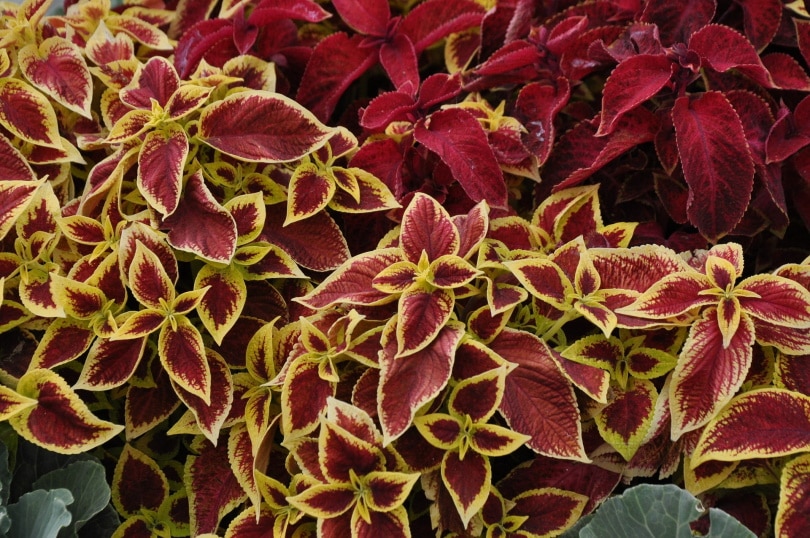Can Coleus Grow Indoors? Tips, Tricks, and How to Guide
-
Pete Ortiz
- Last updated:

Are you looking for a hassle-free, low-maintenance, and easy-to-grow plant? Then you’ll like the lovely coleus! It’s one of the easiest plants to grow, take care of, and propagate. It takes root quickly, flourishes in shade, and requires moderate watering to bloom. More importantly, coleus is a great choice as an indoor planting flower.
With that said, there are still some rules to follow if you want to be successful in growing it inside your house. Join us, and let us talk about it all in detail, including the best soil type, pH, temperature, watering routine, and sun exposure that coleus thrives in. We’ll start by choosing the perfect species, pick the right spot for it, and go from there.
| Botanical Name | Solenostemon scutellarioides |
| Soil Type | Well-drained, aerated, rich, loose, consistently moist |
| Soil pH | 6.0–7.0 (acidic to neutral) |
| Sun Exposure | Partial shade/Full shade |
| Watering Requirements | Low/Medium |
| Temperature | 60–75º Fahrenheit |
| Hardiness Zone | 10–11 USDA |
| In Bloom | Early spring through fall |

Before You Start: Choosing the Right Coleus Type
Coleus is a widely popular plant and there are lots of different cultivars out there, with unique colors and leaf textures. Some gardeners go for smaller plants with a standard color mix, while others prefer exotic species that grow rather tall and feature bright patterns/textures. Here are the most fan-favored coleus types that you can easily grow indoors:
- The Kong series coleus is famous for its bigger-than-average leaves (6–7 inches long) and plants that reach 1.5–2 feet in height. Partial shade, moderate watering, and rich soil are the way to go here.
- In contrast, the Premium Sun coleus is specifically cultivated to withstand exposure to direct sunlight. The leaf structure and patterns are quite lovely, too.
- If you’re looking for a relatively smaller plant, the Wizard series coleus will be just right. With an average height of 12–14 inches, it grows quickly, and adapts easily, but has a “modest” color variety.
- Long shelf life, late flowering, and a captivating apricot-orange leaf color make the Fairway coleus a worthy pick. It’s even smaller than the Wizard species (6–10 inches tall).
- Finally, ruffled, maroon leaves with black spots are the landmarks of the Black Dragon species. It grows 16–20 inches tall and prefers partial shade and well-drained soil.

Seeds, Seedlings, or Cuttings? How Do You Grow Coleus Indoors?
Like with any other gardening plant, you can grow coleus from seeds. This is the longest route, though. Plant the seeds in a potting mix that’s rich in fertilizer and reasonably moist. Don’t cover them too much, as seeds will benefit from exposure to the sun and light. Once the seeds germinate and you see tiny leaves appear on the stems, move them to a “big-boy” pot.
Don’t have the time or the patience to grow seeds? Then go with seedlings instead. These won’t cost much: you can buy a pack for $10–$15 at the local gardening store. Keep the seedlings moist, expose them to moderate light, and fertilize at least 1–2 times a week.
To propagate coleus from cuttings, grab a knife and cut 3–4 inches from the stem. See that the cutting has at least 2–3 leaves attached to it. Next, put the cutting in a glass filled with water. Give it a day or two to grow roots and then transfer it to a standard house plant pot.
1. Make Sure It Gets Enough Light
Bright indirect light is what you should go for if you want to see coleus flourish. A windowsill is a perfect spot for that. See that the plant gets 1–2 hours of sunlight during the day (preferably, early on) but stays in the shade when the sun gets really strong. Exposure to scorching summer sun will make the leaves fade, turn yellow, and even drop.
You need to find the right balance here because the lack of sun will also have a negative effect. Folks that live in cold/rainy states might want to use artificial light to compensate for the scarce natural light. This is especially true for winter. Grow lights are relatively cheap, by the way ($50–$80), and won’t break your bank.
2. The Temperature Comes Next
Coleus does quite well indoors because it’s adapted to tropical climates. As long as the temp in the room doesn’t drop below 60–75ºF, you won’t have to worry about anything. Certain species will grow faster and brighter when the temperature reaches 85ºF. And during cold days, it’s important for the temperature to never drop below 50ºF.
Another thing to look out for is open windows, doors, and cracks: the house needs to be sealed tight. Finally, make sure that the plant is far enough from register vents. The cool and hot air that comes from these vents will do a number on coleus (or any other indoor plant, for that matter).

3. The Soil and Humidity Levels
Well-drained, well-aerated, moist, and loose—that’s the ideal soil for growing coleus indoors. You can buy an all-purpose potting soil from the closest store, and it will be just right for this plant. Some perlite and a healthy amount of peat moss will further help with the growth. Coleus doesn’t thrive in overly acidic soil, though.
For this plant, you want medium to high humidity levels (at least, higher than 30%). Do you live in a dry area? Then consider buying a humidifier. Available for $60–80, or even cheaper, it will do a decent job of keeping humidity within acceptable levels. That will be good for your health too, by the way.

4. How Much Water Does Coleus Like?
Alright, we just talked about the right temperature and humidity, but what about watering? The soil needs to be moist for coleus to grow, but not soggy. When it’s really hot outside, water it once every 2–3 days. Now, if the plant grows slowly during the winter days, try watering it less frequently and only when the soil gets almost completely dry.
And if the same happens during spring/summer, water it more generously. Also, lukewarm water has proven to be best for indoor plants, which can’t be said about hard water (rich in calcium). Gardeners that live in urban areas are recommended to let the water sit for 1–2 days before feeding it to coleus.
5. Fertilizing: How Often Should You Do It?
This greatly depends on the time of the year. In winter, when the plant isn’t really growing much, you won’t have to fertilize it. But in spring-summer, when it’s growing rapidly, fertilize it once or even twice a week. Oh, and see that you’re using the fertilizer at half the recommended strength (or even more diluted); this applies to every single coleus species.
Next, choose a fertilizer that’s high in nitrogen and (relatively) low in phosphorus. This way, the plant will bloom faster, and the foliage will be healthy and bright. All-purpose, water-soluble fertilizer works best for coleus. In contrast, balanced plant food is NOT a good choice, as it will end up hindering growth instead of stimulating it.

6. Pruning To Maintain Steady Growth
Regular pruning of the stems will make sure the plant remains healthy for a long time and doesn’t get leggy. This can be done 365 days a year, but it would be best to “pinch” it in spring/summer when it’s growing actively. Otherwise, you might end up cutting a bit too much and leaving coleus exposed and vulnerable.
Regular scissors will do; focus on the faded leaves and branches. This is important: leaves that are ruined by pests or diseases will pull the plant into the abyss. So, you should be merciless here and cut every time you see a damaged leaf. Pruning is a very powerful “tool” in any gardener’s arsenal for ensuring steady growth.
7. Repotting: The Ultimate Guide
Tiny pots are great for indoor plants, but only to a certain extent. When the coleus gets too big, you’ll have to find a new container for it—that’s exactly what repotting is all about. Do this roughly once a year depending on how fast the plant grows. It’s recommended for the new pot to be at least 2–3 inches wider than the old one, but the height can be the same.
Fill the new container with fresh potting soil, water it adequately, and gently move the coleus, making sure the roots aren’t damaged. What’s the right time for repotting, though? In spring, of course, when the plant thrives and grows quickly. To cultivate growth, you might want to move the plant outdoors, not just into a different pot.

When Can I Move My Coleus Plant(s) Outside?
Again, the best time for that would be early/mid-spring, when there’s no danger of frost. Keep your eyes on the temperature: as soon as it goes above 50ºF, that means it’s time to move the plant. If you’re a bit worried that it will get colder during the night, cover it up before going to sleep. This way, it will still get the benefits of the outdoors while being protected against frost.
Now, coleus isn’t a big fan of the sun, yet it is a warm-loving plant. Besides, the air and the soil will definitely have a positive effect on its growth, and that’s why moving it outdoors is a great idea. The practice of “migration” indoors from outdoors and vice versa is very common, especially in colder areas or states/cities with unpredictable weather.
Is Coleus Safe for Humans and Pets?
No, this plant is NOT edible and is poisonous to humans. Luckily, it won’t cause any major health issues, but you should still stay away from it. The most common side effect is an upset stomach. Don’t eat it raw or add it to any dishes as an ingredient. There is one harmless species, called Solenostemon rotundifolius, but we’d still advise against consuming it.
Coleus is toxic to pets, too. With that said, it does have healing properties. Since the old days, coleus has been used to treat angina, epilepsy, rashes, and even asthma. Plus, it can help cure insomnia, along with dry eyes, various skin conditions, and blood clots. Consult with your doctor before you take it, though.

Why Is My Coleus Dying? How Can I Fix That?
If you see the plant fading and wilting, the first thing to check would be the soil. If it’s dry, water the plant ASAP. Is it losing leaves at a faster rate than before? That means the flower is trying to adapt to low supplies of water. This could also indicate that it’s not getting enough light (or too much of it), and the temperature is much lower. Fertilize it once or twice a week and do your best to cut blooms as they grow.
Otherwise, they will absorb most of the energy and the leaves will turn yellow. If the damage is more serious, try cutting away the rotten parts of the plant. Next, put the healthy portion of the coleus in a new pot that’s rich in a healthy dose of nutrients (don’t overdo it with the fertilizer) and is well-watered. To keep pets away, spray the leaves with a water/diluted soap mix.
Conclusion
The beautiful foliage, low-maintenance nature, and the ability to grow and prosper both indoors and outdoors make coleus a popular garden plant. Native to Asia, it thrives in warm temperatures but mostly prefers shade. If you want to go for something exotic, coleus will be an ideal choice thanks to the bold, unique foliage.
Water it frequently and make sure it doesn’t get burned by excessive exposure. Also, don’t forget about pruning, humidity, and repotting. You can cultivate this plant from cuttings, seeds, or seedlings. Not sure how to do that properly? Go through our friendly guide one more time, and you’ll master the art of growing coleus in no time!
Featured Image Credit: Coleus plant, Piqsels
Contents


